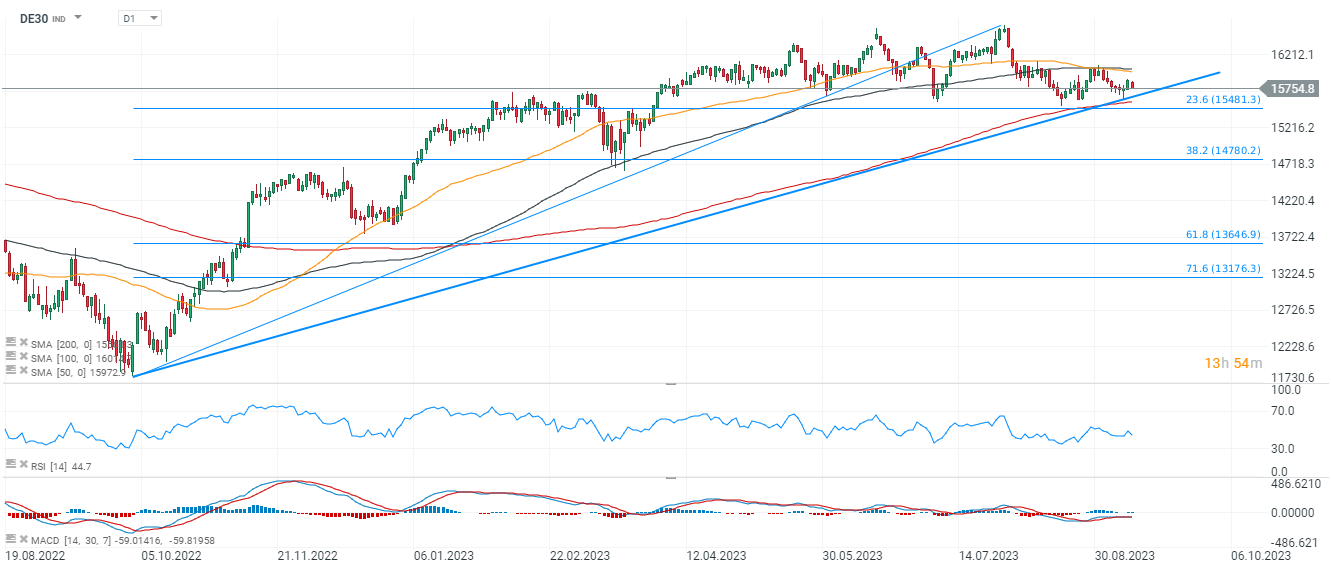As the calendar of macro publications is exceptionally poor today, with Germany's economic sentiment index (ZEW) being the only major publication today - higher volatility may take place in DE30 contracts. Bloomberg analysis indicates that gas demand in European industry remains very low, and the chemical sector is bracing for a further slump in demand. Investors expect the ZEW index to show improvement, coming in at -12.5 versus -15 in July. However, looking at the weak macro readings for August, there seems to be potential for a possible downward disappointment. In addition to the ZEW reading itself, which could heighten recession fears or dampen them somewhat, markets are awaiting this week's European Central Bank decision. Investors, despite Christine Lagarde's communication, see a real chance of keeping rates unchanged in the face of continued weakness in Europe's economies and Germany itself.
Undoubtedly, not only the ZEW but also tomorrow's ECB decision could also be an important point and catalyst for volatility, which will potentially affect trader positioning and investor sentiment. With Germany's industry already looking very bad indeed (PMI > 40 pts), and the ECB's tightening gradually starting to affect demand (given the lagging effect of interest rates), fears of a prolonged recession in Europe seems to justified. The question investors are asking themselves today, then, is how much of this recessionary risk is currently reflected in stock valuations. Since the beginning of the year, the DAX has gained nearly 12%, and has rebounded by more than 30% since the bottom in the fall. However, very strong supply became active above 16,000 points, after the benchmark reached record levels, and since then the bears have gradually taken control.
On the technical side, DAX (DE30) contracts are at an interesting point, 'dangerously close' to the SMA200 average (red line), the 23.6 Fibonacci retracement of the upward wave from autumn 2022, this year's lows from March and the trendline - all four run around 15,500 points. A drop below this level could open the way for bears to 15,000 points and the levels of the 38.2 Fibonacci elimination of 2022. A weaker-than-forecast reading of the ZEW index could reassure investors about the collapse of Germany's economy and curb risk appetite ahead of the upcoming autumn-winter season. Source: xStation5
Source: xStation5
สรุปข่าวเช้า
Daily Summary: Holiday Commodity Fever
ข่าวเด่นวันนี้: ดอลลาร์อ่อนค่าลง ขณะที่ราคาน้ำมันฟื้นตัวจากความตึงเครียดระหว่างสหรัฐฯ–เวเนซุเอลา
US OPEN: ความคึกคักกลับมาในช่วงต้นสัปดาห์


